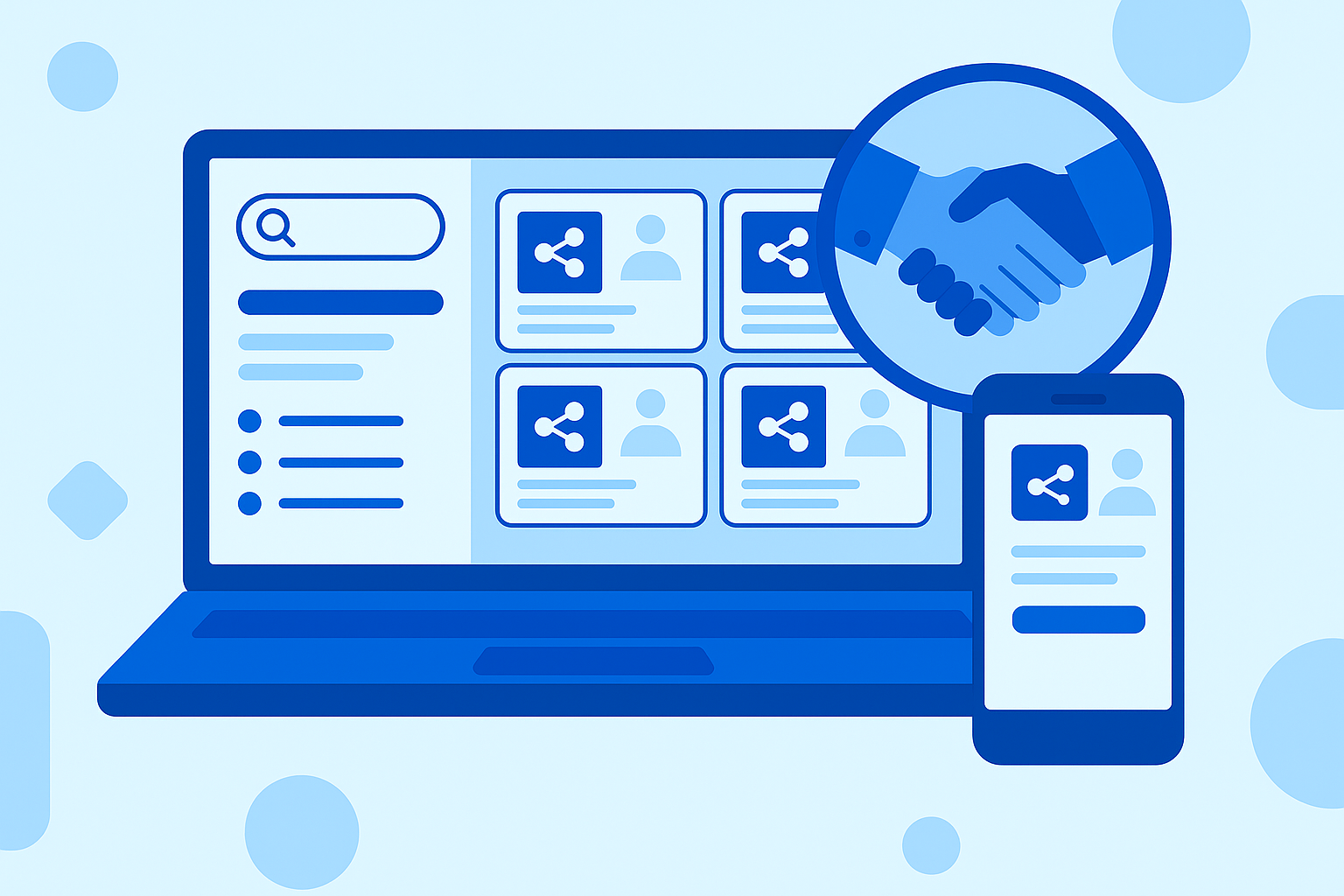What is partner marketplace software
Partner marketplace software powers the customer-facing hub where people browse, evaluate, and connect with partners in your ecosystem.
A real partner marketplace does much more than display a grid of logos. It helps customers solve problems, discover integrations, choose service providers, and understand how your ecosystem strengthens your product. When it works well, the marketplace becomes a strategic asset. It drives integration adoption, supports retention, enables co-marketing and co-selling, and gives partners a structured place to contribute.
A partner marketplace isn’t just a marketing asset. It’s a product.
What partner marketplace software actually does
Modern partner marketplace software is built to support a growing ecosystem, not a static directory. It usually includes four core components that work together.
A branded customer-facing experience
Custom design, SEO-friendly pages, rich search, useful filters, multiple partner types, and clear calls to action. Customers should feel like they’re using a native part of your product.
Tools for partners
Submission access, edits, content uploads, approvals, review forms, and translations. This lets partners keep their listings fresh without relying on your team.
Internal tools for your team
No-code admin controls, taxonomy management, analytics, reporting, and support for multiple marketplace surfaces. Partnerships, marketing, and product teams can run the marketplace without engineering.
Integrations inside your product
Many SaaS companies embed a pared-down marketplace in-app. Customers can discover and activate integrations on their own, and some platforms surface recommended partners based on user behavior.
The top partner marketplace software options
Here are the strongest options available today. These are purpose-built ecosystem tools, not repurposed PRM modules or CMS workarounds.
1. Partner Fleet (best for SaaS ecosystems)
Partner Fleet is the leading choice for SaaS companies that want to launch a public or in-app partner marketplace without heavy engineering. It supports tech partners, service providers, agencies, consultants, channel partners, and more.
It stands out for fast implementation, dynamic taxonomies, partner self-management, clear workflows, in-app marketplace support, and AI-powered listing creation and translations. The platform is modular, so you can expand into an integration marketplace, developer portal, or partner program hub over time.
Bottom line: the most modern, complete, scalable ecosystem platform.
2. AppDirect (best for transactional app stores)
AppDirect is powerful if your goal is to sell and provision third-party apps. It handles licensing, billing, payments, and multi-vendor provisioning. It’s built for commerce, not discoverability.
Bottom line: great for app stores, too heavy for ecosystem-led marketplaces.
3. PartnerPage (best for simple needs)
PartnerPage is a minimalist partner listing tool. It works for early-stage programs that only need basic listings.
Bottom line: clean and easy, but not built for growing ecosystems.
4. Building your marketplace in your CMS
Some teams use Webflow, WordPress, or HubSpot to assemble a marketplace. It works when your ecosystem is tiny and you have low expectations. Once you scale, it becomes messy and hard to maintain.
Bottom line: a temporary solution. Most teams outgrow it within a year.
5. PRM add-ons
Some PRMs offer basic marketplace modules, but they’re designed for internal partner workflows, not customer-facing experiences. The UI is often clunky and the customization is limited.
Bottom line: great PRMs, not great marketplaces.
6. Building in-house
Building your own marketplace gives you infinite control, but it is expensive and slow. The hidden costs are in search logic, taxonomy design, partner tools, localization, and ongoing maintenance.
Bottom line: you get flexibility, but at a very high cost.
How much partner marketplace software costs
Pricing depends on your ecosystem size, partner types, whether you need in-app or public experiences, localization needs, and desired customization. Some tools start in the low thousands per month. Transactional platforms and in-house builds can run six figures or more.
For a realistic estimate, use the Build vs. Buy Calculator.
How to choose the right platform
Before you commit, answer a few key questions:
- Who will manage it day to day
- Which partner types you need to support
- Whether partners need self-service editing
- Whether customers need to activate integrations in-app
- How important SEO is
- How fast you need to launch
These answers quickly narrow the field.
Final thoughts
If your goal is to showcase partners, scale your ecosystem, help customers adopt integrations, and offer a polished discovery experience, Partner Fleet is built for that.
If you need a transactional app store, AppDirect is a better fit.
If you need something simple, PartnerPage can work.
If you have unlimited engineering resources, build in-house.
But if you want the fastest path to a scalable, modern partner marketplace, Partner Fleet is your best option.
👉 Book a demo to see how fast you can launch.




